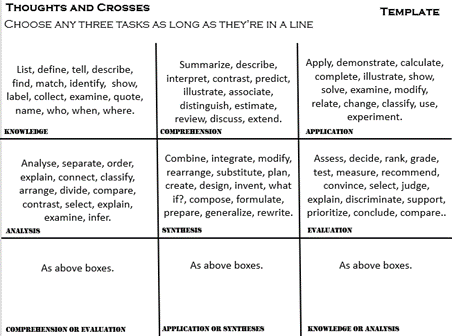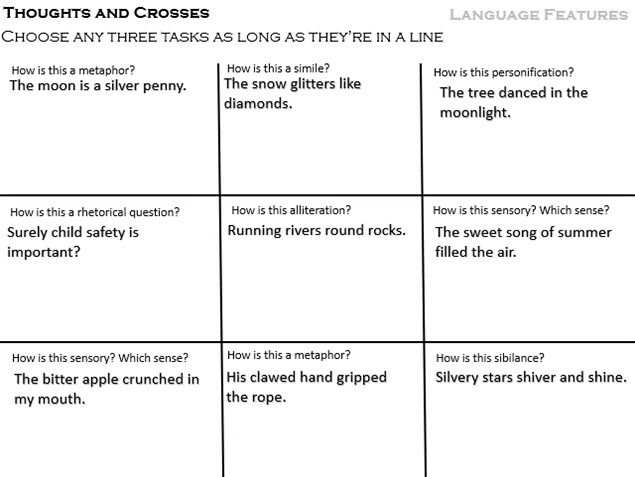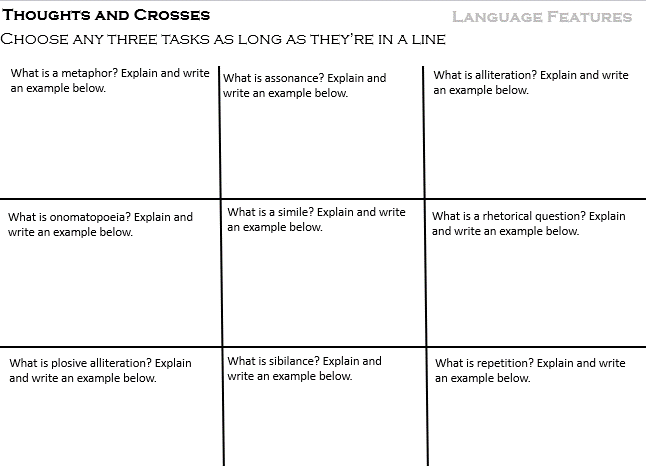This week I am sharing what I have been doing with the ‘Thoughts and Crosses’ strategy in my Year 9 English lessons.
Context
Some children in my Year 9 class are sometimes hard to motivate and engage. They are all fairly capable, but some are not always as focused and absorbed in their learning or willing to ‘have a go’ when work is challenging. I wanted to provide an activity that would allow the children to feel successful but that would also enable me to check understanding and application of learning.
I decided to use a series of ‘Thoughts and Crosses’ activities both as ‘Do Now’ activities but also as checkpoints within the lesson. The tasks were different each time but did test similar skills – the identification and impact of figurative language features.
What I Planned
‘Thoughts and Crosses’ is a simple strategy that provides a challenge to all children yet is engaging and non-threatening. It is easily adaptable for ability and need so can be used to provide high challenge as well as high support. The premise of the strategy is that all children should attempt to complete one line of a thoughts and crosses grid with the table being designed to ensure all directions include a range of tasks with varying levels of challenge. The children can choose the direction of the line they complete and so have the ability to control and manage their own work. We completed several of these activities with the children improving their engagement over the course of a few lessons.
Evaluation of what happened
Some of the children engaged with the strategy immediately and wanted to complete the entire table which if they felt confident to do so then that’s what they could do. By requiring the children to only complete one line then this was achievable for all children in the group. Because the tasks were short it made it easy to use a visualizer to do whole class feedback following the activity where children could use green pens to complete the tasks they hadn’t done but also check and correct the lines they had completed themselves. This process allowed me to gain an understanding of which techniques the children were struggling to understand and apply and also provided the opportunity to revisit and reteach techniques as necessary. In addition, the completed tables provided examples of how key language features could and would be used by writers effectively.
The children responded well to the tasks and enjoyed the challenge of completing at least one line if not the full grid. It took only one or two trials for the children to understand how to use the grids and engagement with the activities increased with all children engaging.
What Next?
The strategy can be applied easily in any lesson allowing me to check understanding of a story, to check understanding of language application, and to provide quick and short opportunities for practise and application. Thoughts and crosses is a useful strategy for revisiting, spacing and interleaving learning. While I am not using the strategy as much as I was when practising it, I am using it occasionally to revisit and check learning.



Find out more about Embedding Formative Assessment
A two-year professional development programme for all schools and colleges that has been independently proven to increase student achievement.

